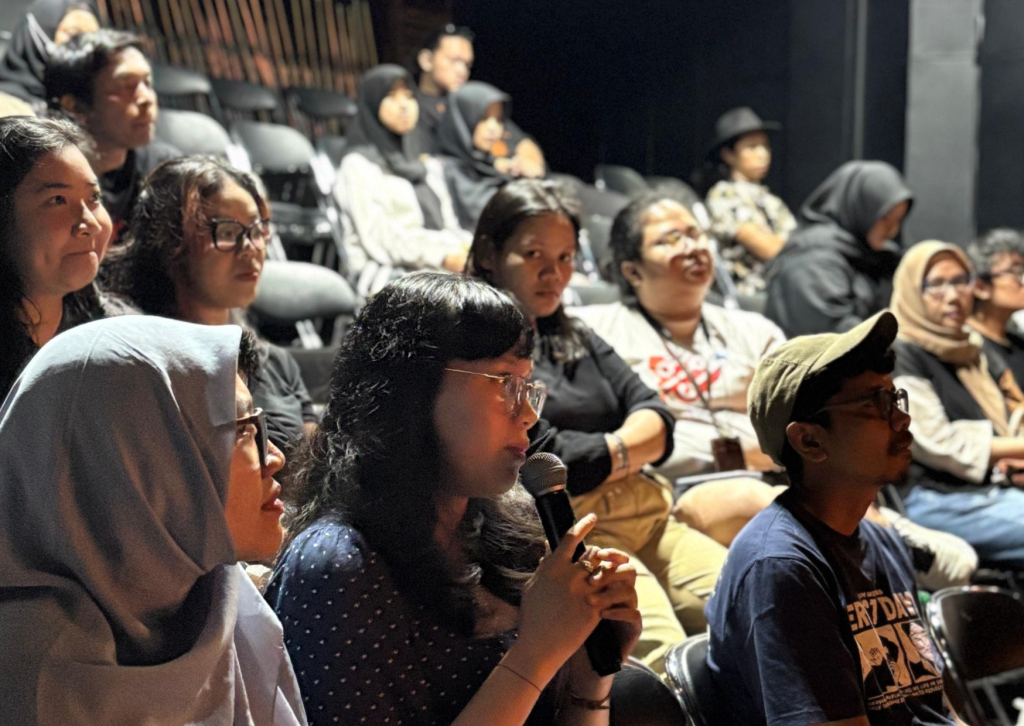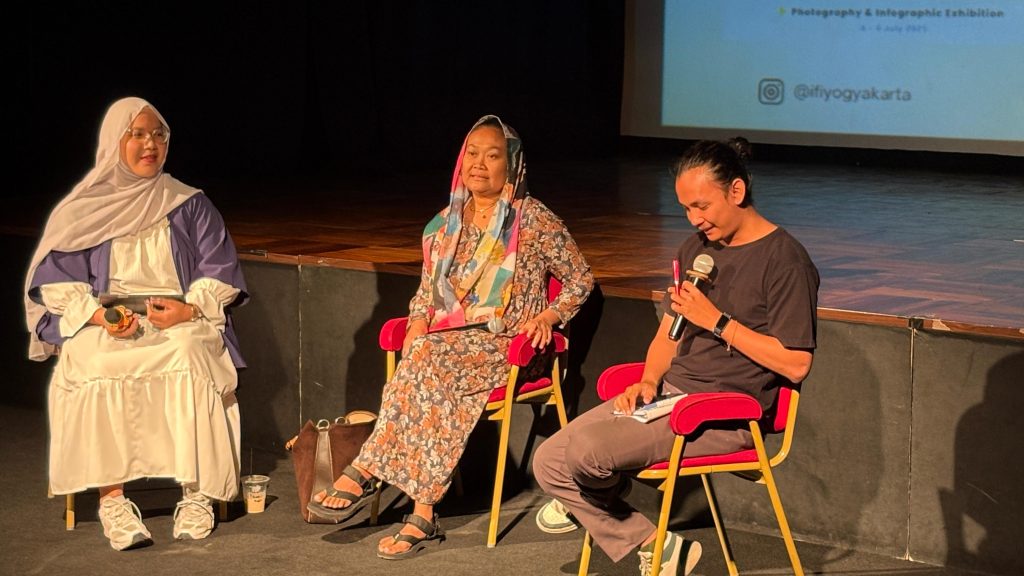At 10:00 AM on Saturday, July 5th, 2025, the Media and Cultural Studies Program (Kajian Budaya dan Media/KBM) held a Community Service (PKM) event. One of the activities in this PKM series, which took place at the Institut Français d’Indonésie (IFI) Yogyakarta, was a photography and infographic exhibition and discussion titled From Emotion to Representation: Anti-Discrimination and Gender-Based Violence Among Gen Z.
During the event, Arivia Rahmadiani—who served both as a speaker and as a photographer with her work featured in the exhibition—shared the story behind her photo piece titled Belitan Asa (“Entangled Hopes”). Arivia opened up about how she had experienced sexual violence multiple times but felt unable to share her experiences with anyone. As a form of expression, she channeled her emotions and stories through the visual medium of photography.

Several other photographers in the exhibition also conveyed similar spirits of resistance and healing. Amanda Zefanya Theresia, one of the infographic creators, explained how survivors of violence are often subjected to victim-blaming instead of receiving support. Statements such as “It’s because your clothes are too revealing” or “That’s because you just don’t satisfy your husband’s needs” are commonly thrown at survivors, further cornering them. These toxic narratives inspired Zefanya to create an infographic titled Revikitimsasi (“Re-victimization”) .

Each contributor in the exhibition shared the personal stories behind their work. As an attendee of both the exhibition and discussion, I felt confronted with how often we are indifferent or unaware of the violence that happens around us. Worse, we might even unknowingly become complicit in perpetuating it. This event deserves a ‘trigger warning’ label because, as a fellow former survivor, hearing these stories brought back a storm of old emotions—anger, sadness, helplessness, and guilt.
And yet, this exhibition served as a rare and vital platform for survivors—for what Spivak (1994) calls the “subalterns”—to finally be heard. Their silence has not only been due to trauma but also because they have long lacked a safe space to speak.
As Dewi Candraningrum, one of the discussion speakers, expressed: art became her way of coping as a domestic violence survivor. Though she had no artistic background, she began to paint as a form of emotional release. Now, her canvas and paintings have become part of her activism, giving voice to fellow women survivors.

In the end, providing platforms for survivors of discrimination and violence, while also advocating for a more sensitive, caring, and non-coercive society, must remain an ongoing effort. What the KBM program has initiated is only the seed—an embryo that needs nurturing to grow and spread awareness of anti-discrimination and gender-based violence more broadly throughout society.
Reference:
Spivak, G. C. (1994). “Can the Subaltern Speak?” in P. Williams & L. Chrisman (Eds.), Colonial Discourse and Post-Colonial Theory. New York: Columbia University Press.
Contributor: Adhani J. Emha
SDG 5 (Gender Equality), SDG 10 (Reduce Inequality)
